
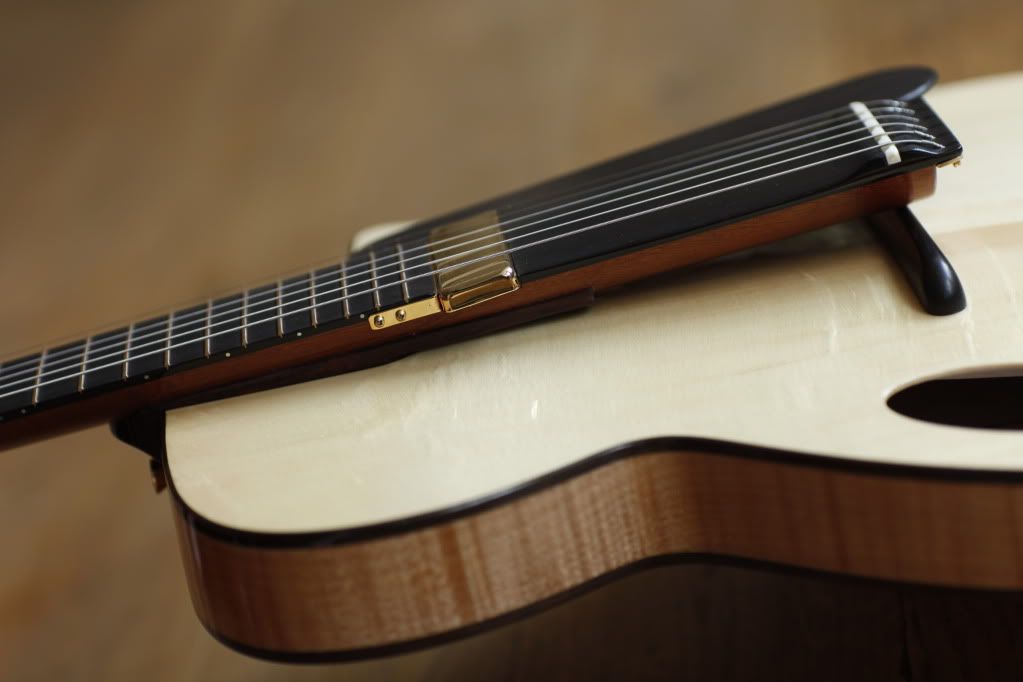
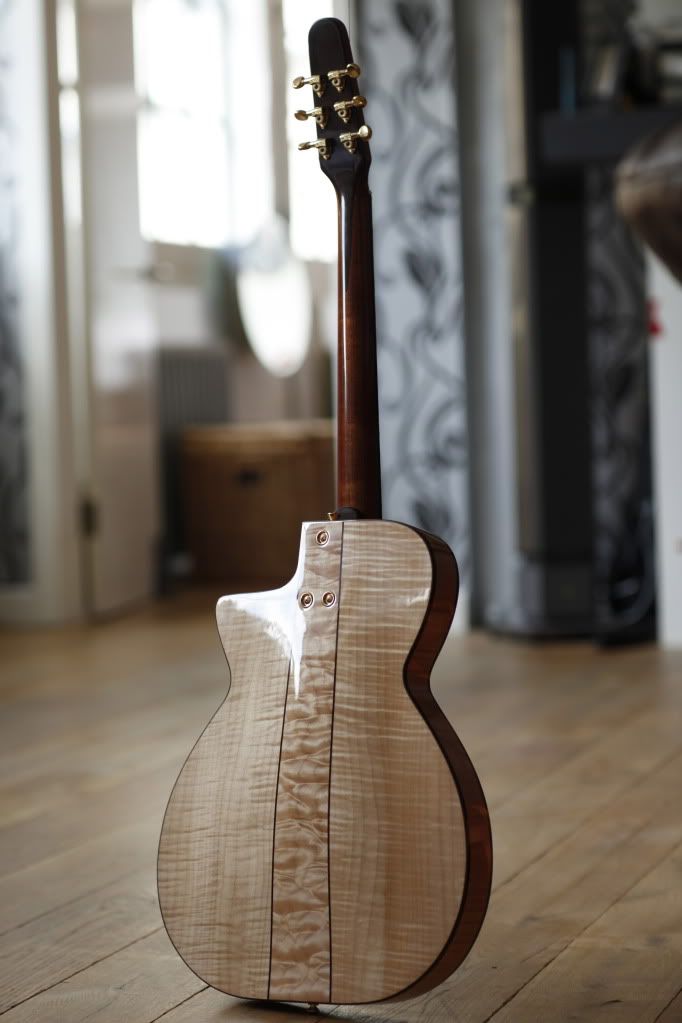

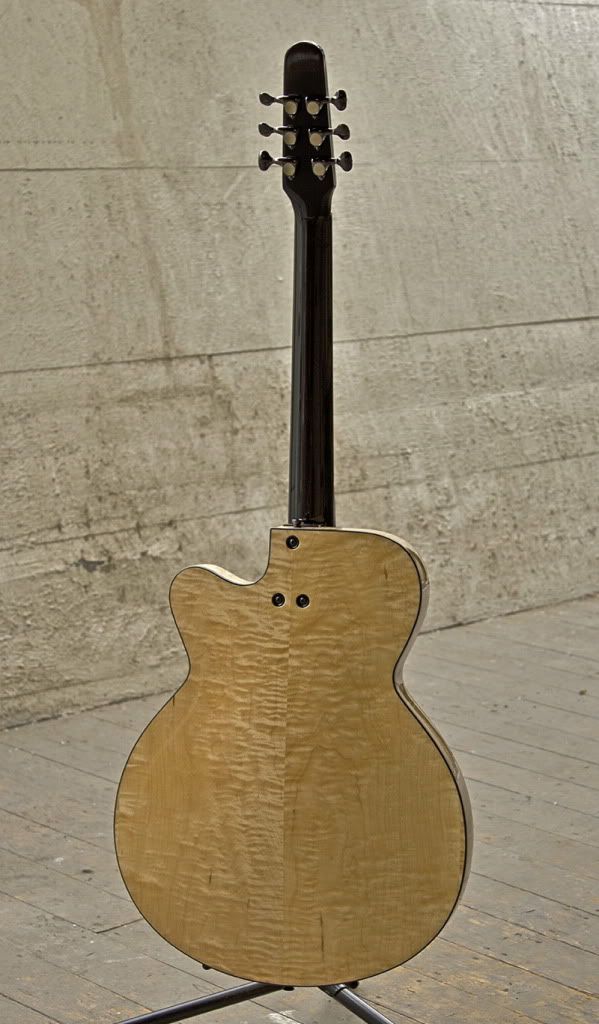
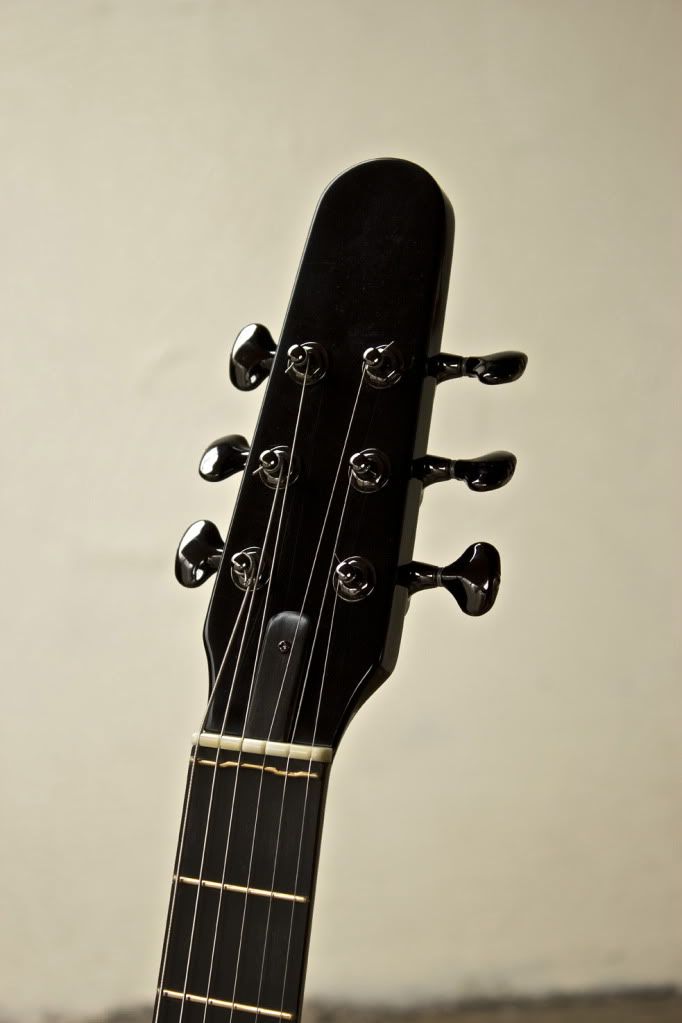
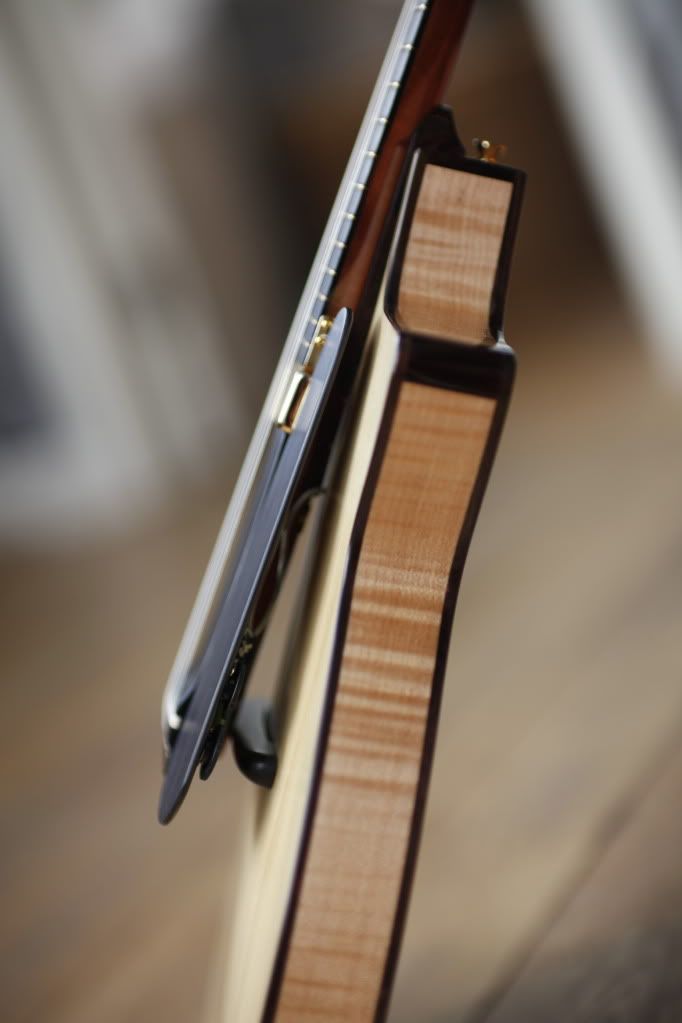

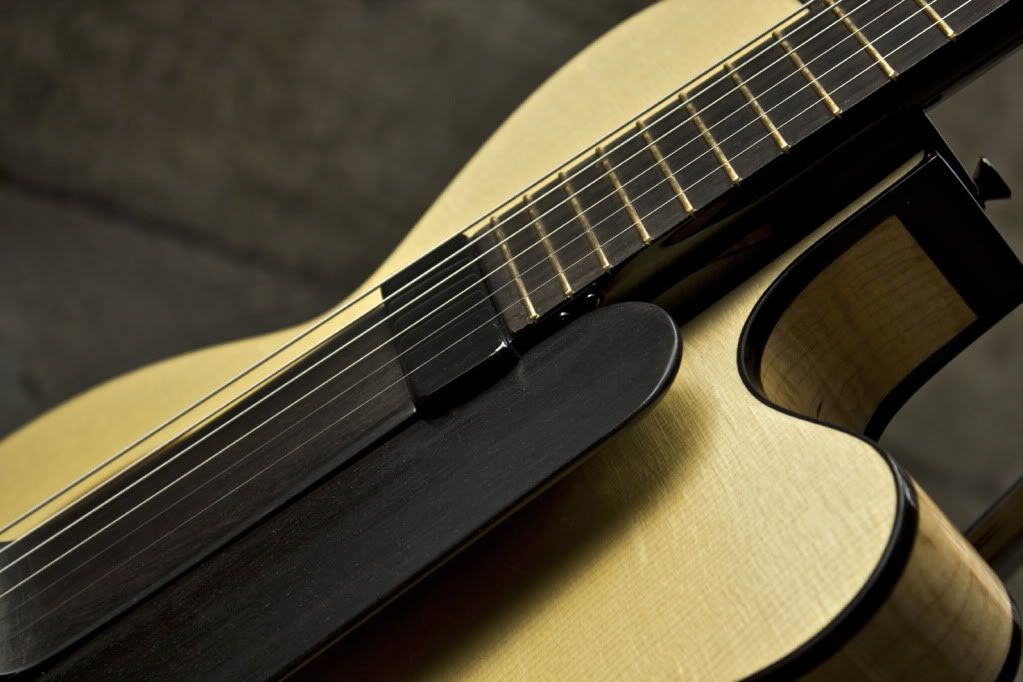
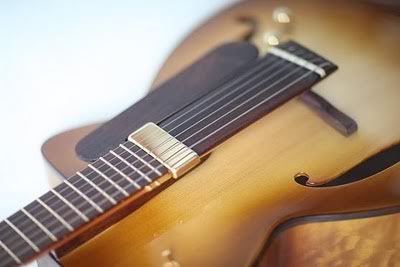
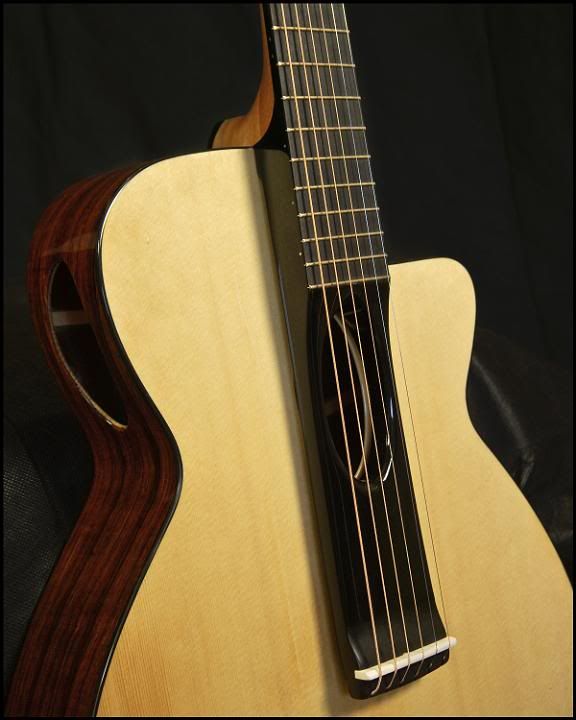
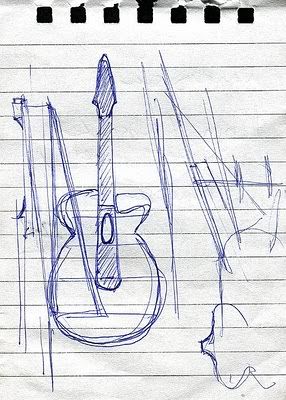
nigel
http://www.nkforsterguitars.com/#/book/4568936095












By reading Byers and Doolin. They've both written about how to work this out.Nick wrote:Would you share how you did the compensated Zero fret Nigel or is that a Forster family secret passed down through twelve generations of skilled tradesmen?
Appreciate the info Nigel, thanks. Not sure when I'll next do a zero fretted build but all usefull tidbits for filing awaynkforster wrote:
By reading Byers and Doolin. They've both written about how to work this out.
It's like this: set up your guitar as normal, get your tuner out (mine is a Peterson strobe) and make a map of where you're at for each string at each fret. By that I mean make a note of how many cents sharp or flat you are of equal temperament for each string at each fret. From that you can calculate whether your nut and saddle should be in relation to where they are now: on a 25.4" scale, one cent equals about 0.4mm (sorry to mix imperial and metric, I'm forever doing it) So you plan your new saddle and zero fret (or nut) accordingly adding or subtracting 0.4mm for every cent out. Then I make 'em and fit 'em and check 'em. If it's correct - and you can get extremely close to perfect equal temperament, then take notes for that scale, action and string as this is quite repeatable. Strings do vary of course, so it's worth doing again if you're changing gauge or type, but this is a very effective way to do this.
Changing the zero fret or nut in accordance to what is going on in the first few frets and changing the saddle to fit in with what is going on at say the 10th and up means you usually don't have to keep going back and forth. It works. Try it.
The fret itself: I start out with a wide stainless steel fret, flatten it to the correct height and to give me a broad top surface to work with, file the shape into it, then go through the grades and polish. Takes about an hour and works really well.
The hardest thing is to actually accept that equal temperament is what it is - perfectly out of tune! I've set guitars up like this so many times and still find myself tying to sweeten when tuning which is crazy - I understand the reason for equal temperament but my heart is just drawn to Just temperament...which is another story entirely....So, even when it's done all you have achieved is a compromise. But a good one.
Very informative Nick.nkforster wrote:By reading Byers and Doolin. They've both written about how to work this out.Nick wrote:Would you share how you did the compensated Zero fret Nigel or is that a Forster family secret passed down through twelve generations of skilled tradesmen?
It's like this: set up your guitar as normal, get your tuner out (mine is a Peterson strobe) and make a map of where you're at for each string at each fret. By that I mean make a note of how many cents sharp or flat you are of equal temperament for each string at each fret. From that you can calculate whether your nut and saddle should be in relation to where they are now: on a 25.4" scale, one cent equals about 0.4mm (sorry to mix imperial and metric, I'm forever doing it) So you plan your new saddle and zero fret (or nut) accordingly adding or subtracting 0.4mm for every cent out. Then I make 'em and fit 'em and check 'em. If it's correct - and you can get extremely close to perfect equal temperament, then take notes for that scale, action and string as this is quite repeatable. Strings do vary of course, so it's worth doing again if you're changing gauge or type, but this is a very effective way to do this.
Changing the zero fret or nut in accordance to what is going on in the first few frets and changing the saddle to fit in with what is going on at say the 10th and up means you usually don't have to keep going back and forth. It works. Try it.
The fret itself: I start out with a wide stainless steel fret, flatten it to the correct height and to give me a broad top surface to work with, file the shape into it, then go through the grades and polish. Takes about an hour and works really well.
The hardest thing is to actually accept that equal temperament is what it is - perfectly out of tune! I've set guitars up like this so many times and still find myself tying to sweeten when tuning which is crazy - I understand the reason for equal temperament but my heart is just drawn to Just temperament...which is another story entirely....So, even when it's done all you have achieved is a compromise. But a good one.
The guitar is compensated for equal temperament, but the tuning will have an effect. One of my customers always plays in DADGAD and so I compensated accordingly.H3ytm@n wrote:Very informative Nick.nkforster wrote:.Nick wrote:Would you share how you did the compensated Zero fret Nigel or is that a Forster family secret passed down through twelve generations of skilled tradesmen?
What happens when you retune the guitar to a non-standard tuning?
Beautiful guitar BTW, in so many ways.

Users browsing this forum: No registered users and 7 guests